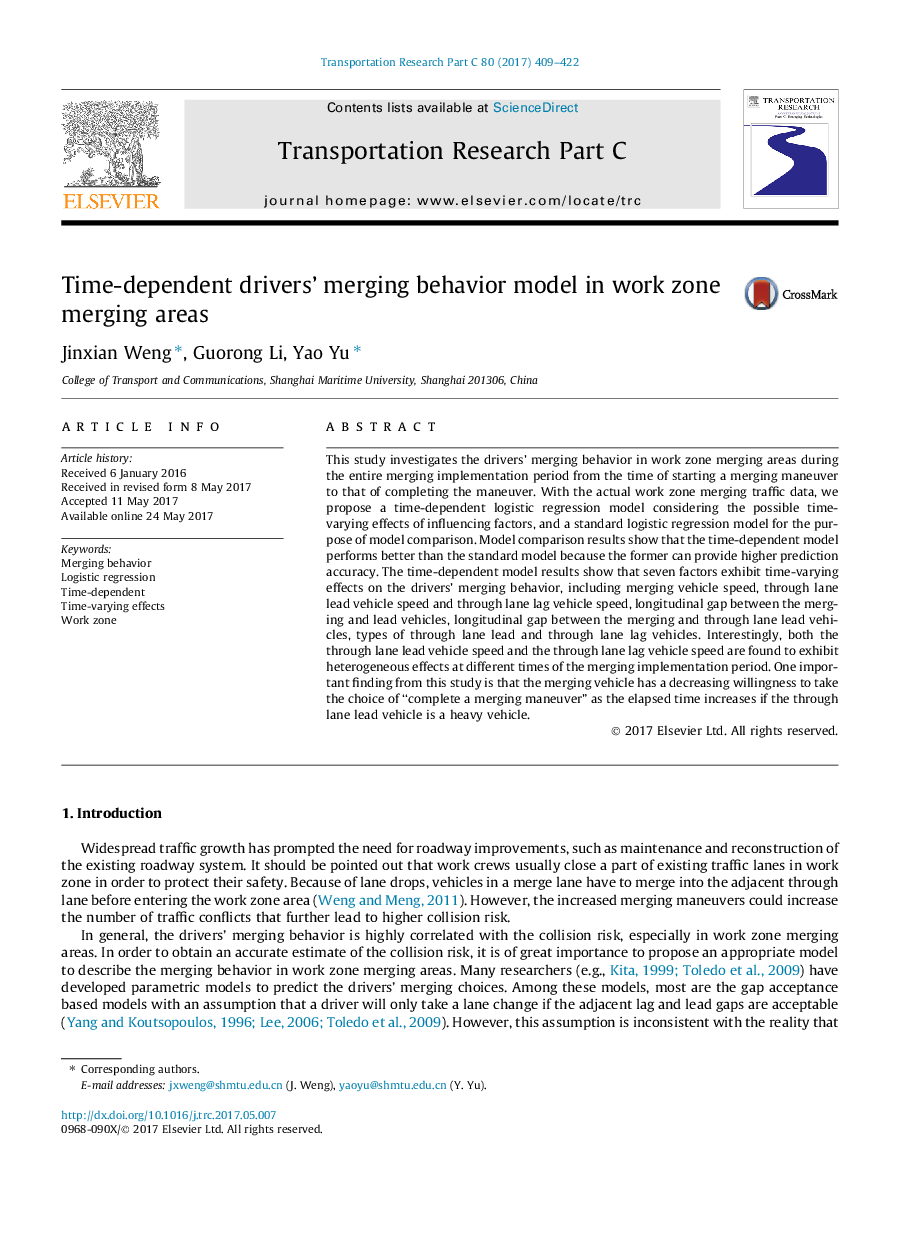| Article ID | Journal | Published Year | Pages | File Type |
|---|---|---|---|---|
| 4968454 | Transportation Research Part C: Emerging Technologies | 2017 | 14 Pages |
Abstract
This study investigates the drivers' merging behavior in work zone merging areas during the entire merging implementation period from the time of starting a merging maneuver to that of completing the maneuver. With the actual work zone merging traffic data, we propose a time-dependent logistic regression model considering the possible time-varying effects of influencing factors, and a standard logistic regression model for the purpose of model comparison. Model comparison results show that the time-dependent model performs better than the standard model because the former can provide higher prediction accuracy. The time-dependent model results show that seven factors exhibit time-varying effects on the drivers' merging behavior, including merging vehicle speed, through lane lead vehicle speed and through lane lag vehicle speed, longitudinal gap between the merging and lead vehicles, longitudinal gap between the merging and through lane lead vehicles, types of through lane lead and through lane lag vehicles. Interestingly, both the through lane lead vehicle speed and the through lane lag vehicle speed are found to exhibit heterogeneous effects at different times of the merging implementation period. One important finding from this study is that the merging vehicle has a decreasing willingness to take the choice of “complete a merging maneuver” as the elapsed time increases if the through lane lead vehicle is a heavy vehicle.
Related Topics
Physical Sciences and Engineering
Computer Science
Computer Science Applications
Authors
Jinxian Weng, Guorong Li, Yao Yu,
